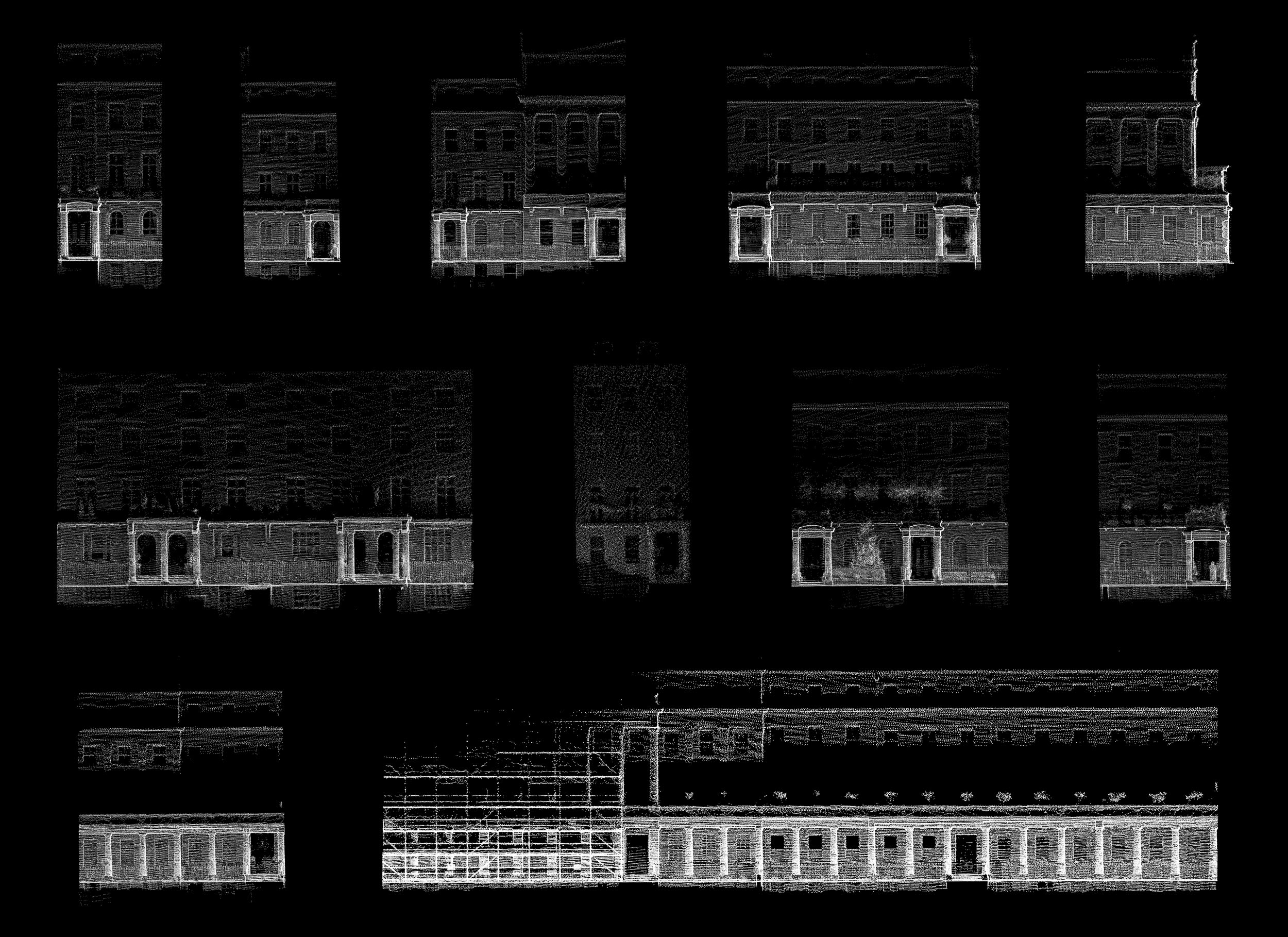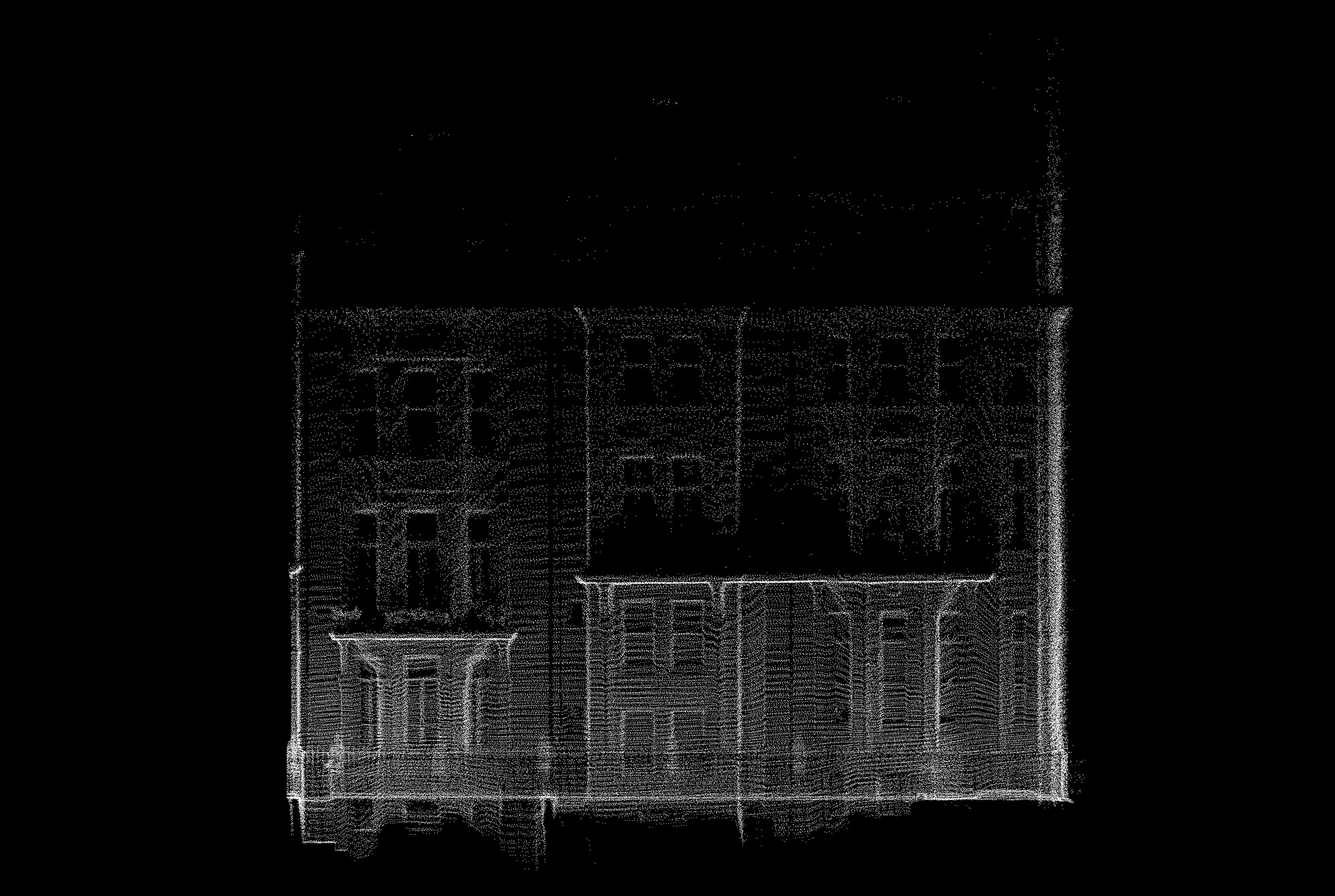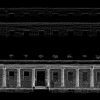Offshore Capital
Britain is home to a web of property which is directly or indirectly linked to offshore tax havens or host to ‘shell companies’ (so called because they conceal a company’s true owners). While some of this is for legitimate purposes, property also is and has been held in this way to avoid tax, to conceal the identity of the investors, and to hide dubious wealth.
This project is an experiment in using 3D scanning to visually catalogue the network of businesses and property that are linked to shell companies and offshore tax havens. The project initially focused on London but has now expanded to record the network in other parts of the UK and British Isles. It is simply an attempt to visually record where this network is located and what it looks like. It takes the medium of 3D scanning – mostly used for archaeological, geographic and architectural measurement purposes – and asks a simple question: can the ‘ghostly’ aesthetics of the 3D scanner record the buildings involved in housing this network in a form that is emotively closer to their actual reality in the British built environment and the economy?
The 3D scans have been made using a mobile lidar laser scanner. In a way similar to how sonar or radar works, the scanner uses millions of laser beams to build 3D maps of buildings and streets.
The scanner has limitations in its ability to copy accurately, however. What it can ‘see’ is affected by its inability to penetrate hard walls and objects, its 20m scan radius, and the operator’s walking speed. As such these scans are surface level captures of these properties, based on what the scanner could capture as it went past the property from street level. The scans both collect visual information on these properties but also reflect our limited abilities to capture more than structural traces. Their visual appearance is defined as much by voids of information as by data captured.
Published alongside each property scan is publicly available information relating to the businesses located at the properties, the ownership, and related press articles. Some of the information on the properties comes from the UK Government’s Land Registry Service andUK Government’s Companies’ House.
Where a property is no longer part of the UK’s offshore shell company network, the pages will not be deleted but the record will be updated to reflect the past use of the architecture.
The project is long indebted to the investigative journalism mapping work by Private Eye on this topic, but has also been using more recent mapping produced by Tax Policy Associates. This project has been supported by funding from London College of Communication Research, as well as equipment loans from Prof Mat Disney, UCL Geography, and NERC NCEO.
Project by:
www.maxcolson.com
e: maxdfcolson [ at ] gmail.com | m: +447 81 78 77 639 | Insta: @maxcolson

Contact
For more information on the prints or anything else please get in touch or sign up to the newsletter below:
e: maxdfcolson [ at ] gmail.com | m: +447 81 78 77 639 | Insta: @maxcolson

The Small Print
There are legitimate uses for offshore companies, services, and trusts. The inclusion of a building on the Offshore Capital website is not intended to suggest or imply that they have engaged in illegal or improper conduct. Many people, businesses, and entities have the same or similar names. We suggest you confirm the identities of any individuals or entities included in the database based on addresses or other identifiable information. The data comes from publicly available sources such as HM Land Registry, Companies House and journalism produced by reputable journalistic outlets. Some information may have changed over time. Please contact us if you find an error in the database.
The project shows a very small selection of property registered in London in the name of an offshore company between 2005 and July 2024. It draws on and uses publicly available data released following Freedom of Information requests from Private Eye, expert work by software engineer Anna Powell-Smith, and Tax Policy Associates.
Property and company data is from Land Registry records, which occasionally contain errors. “Price paid” figures may be totals for sales including other properties. When a property title has been identified, the underlying Land Registry record can be obtained for a £3 fee from www.gov.uk/search-property-information-land-registry.


